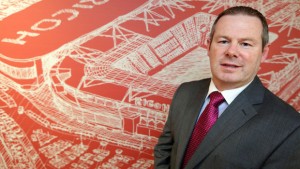
A lot of people see print as a necessary evil. They’d rather not have to have anything to do with it but recognise that for practical reasons they have to. The paperless office that was promised never really materialised, but with less people based in offices and instead working on client site, or from home offices, the more paper you can take out of the equation, the better, Matthew McCann, Ricoh Ireland
“In electronic form, any document will flow much more efficiently through the organisation. Print is a still a necessity for certain arms of the business and for some legislative reasons within some organisations but increasingly there are alternatives.”
“Take the case of documents that need signing — if you use Adobe’s Echosign software you can move your contracts around and have them signed electronically. Compare that to having someone drive a piece of paper out to a client site, have it signed and then drive it back, before having someone else file it for safe keeping.”
“That’s where our focus is — moving the customer away from looking at this as just an output issue. People are increasingly happy to read their information on a tablet or smart phone, rather than needing it printed out for them and filed, and as we increasingly move that way there are opportunities to achieve new kinds of savings.”
Business support
This industry trend is driving change not just in the services being offered by the traditional print services vendors, but also in the way in which those vendors are thinking about themselves.
“More often than not, particularly in the enterprise space, we’re being asked ‘what can you do for our business processes?’” said Jason Quinn, technical solutions manager, Ergo.
“Our customers still expect us to provide them with savings and they want managed print but they also want us to help them drive new revenue and that’s a new thing. They want the multi-function devices, the ability to scan-to-e-mail, scan-to-folder and so on but they also want to know what you can do for their business.”
“They’re asking us for process flow consultancy and document consultancy and more times than not, we’re finding ourselves looking at their business processes from start to finish,” he said.
Quinn says that while this is an unusual departure for a traditional print company, it is indicative of the way the industry is going.
“Increasingly we’re getting involved in business process re-engineering with our enterprise customers because it’s hard to separate how documents get created and what purpose they serve from how the flow of business happens in an enterprise.”
“I think advanced document management services is where we’re going and this kind of service is only going to become more crucial.”
Ergo recently launched a new enterprise forms management product, Flowforma, which it says is in response to the more sophisticated document management needs of its clients.
“It’s built on the Microsoft Sharepoint platform and allows business analysts to build forms, whereas before they would have had to get the IT department to write code. To join the dots, we can also develop managed print services apps to link these documents together – that’s quite a bit removed from the traditional managed print product, where you make sure there is toner in a machine.”
Document security
Quinn also says that Ergo is seeing a resurgence in interest in document security.
“About five years ago, security was a buzz term in the print industry but nobody really did anything about it. Now, companies are coming back to us to ask how to make sure their document systems are fully compliant.”

There are more efficiencies waiting to be achieved in terms of how document-centric services are delivered to the customer, and also in terms of the types of hardware development that’s going on. It’s not simply about ‘speed and feed’, it’s about stuff like enabling open platforms to allow different document solutions to work together. It’s about being able to offer more sophisticated security and at a lower cost, Martin Deignan, OKI Systems
Software that focuses on this is becoming more popular as a result, he says.
“HP has a great piece of security software built on policies that nobody else seems to have yet. It allows you set a policy to say that any multifunction device or printer that gets added to a network is automatically detected and configured to meet the security compliance standards of the policy.”
“Traditionally vendors can’t do that, because they depend on an IT guy walking up to the device and configuring it. This is something we’re going to see more of in my opinion.”









Subscribers 0
Fans 0
Followers 0
Followers